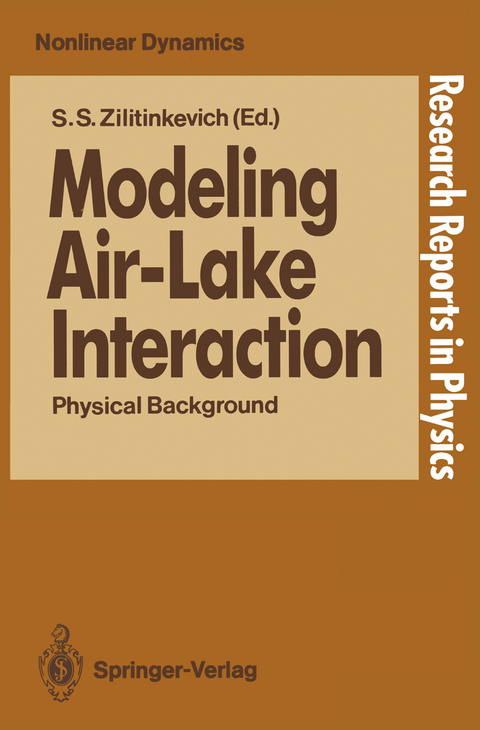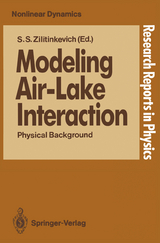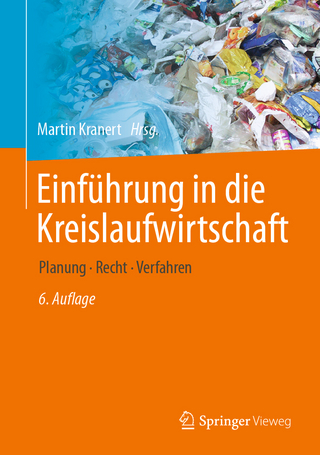Modeling Air-Lake Interaction
Springer Berlin (Verlag)
978-3-540-52988-0 (ISBN)
Current concern about the stability of our climatic system in light of the influx of manmade components makes the topic of this book, theoretical modeling of a microclimate, of supreme importance. This book provides a good account of the main phenomena determining the thermal and dynamic regimes in air-lake systems and is aimed at students and researchers in climatology and its subdisciplines.
1. New Results in the Theory of Planetary Boundary Layers.- 1.1 Vertical Structure and Energy Transfer Under Neutral and Stable Conditions.- 1.2 The Entrainment Equation for Convection.- 2. Diurnal Cycle of the Atmospheric Planetary Boundary Layer.- 2.1 Parameterization of Energy Transfer Processes.- 2.2 Calculation of Dynamic Parameters.- 3. Air-Water Interaction Parameters over Lakes.- 3.1 Similarity Theory for a Near-Surface Stratified Layer.- 3.2 Parameterization of Fine-Scale Air-Water Interaction.- 3.3 Special Cases.- 4. Wind-Induced Drift of Surface Films.- 4.1 Main Parameters of the Drift Current.- 4.2 Measurements of Drift Roughness in the Laboratory.- 4.3 Drift Roughness from Measurements on Lakes.- 5. Seasonal Changes of Temperature and Mixing Conditions in a Lake.- 5.1 Parameterized TEMIK Model.- 5.2 Numerical Experiments and Comparison with Field Measurements.- 6. Theoretical and Laboratory Investigation of the Thermal Bar.- 6.1 Theoretical Model.- 6.2 Laminar Stage of the Development of the Thermal Bar in Laboratory Experiments.- Future Work.- Table of Symbols.- References.
| Erscheint lt. Verlag | 11.6.1991 |
|---|---|
| Reihe/Serie | Research Reports in Physics |
| Co-Autor | E.E. Fedorovich, S.D. Golosov, K.D. Kreiman, D.V. Mironov, M.V. Shabalova, A.Yu. Terzhevik, S.S. Zilitinkevich |
| Zusatzinfo | XI, 129 p. 1 illus. |
| Verlagsort | Berlin |
| Sprache | englisch |
| Maße | 155 x 235 mm |
| Gewicht | 245 g |
| Themenwelt | Naturwissenschaften ► Biologie ► Ökologie / Naturschutz |
| Naturwissenschaften ► Geowissenschaften ► Geophysik | |
| Naturwissenschaften ► Geowissenschaften ► Meteorologie / Klimatologie | |
| Naturwissenschaften ► Physik / Astronomie ► Strömungsmechanik | |
| Technik | |
| Schlagworte | air pollution and air quality • Air-water interaction • fluid- and aerodynamics • Gemischte Schichten • Luft-Wasser-Wechselwirkung • Microclimate • Mikroklima • Planetar. Grenzschichten • Planetary boundary layer • Temperaturwechsel • Thermal bar • Thermocline • Upper mixed layer |
| ISBN-10 | 3-540-52988-8 / 3540529888 |
| ISBN-13 | 978-3-540-52988-0 / 9783540529880 |
| Zustand | Neuware |
| Informationen gemäß Produktsicherheitsverordnung (GPSR) | |
| Haben Sie eine Frage zum Produkt? |
aus dem Bereich




